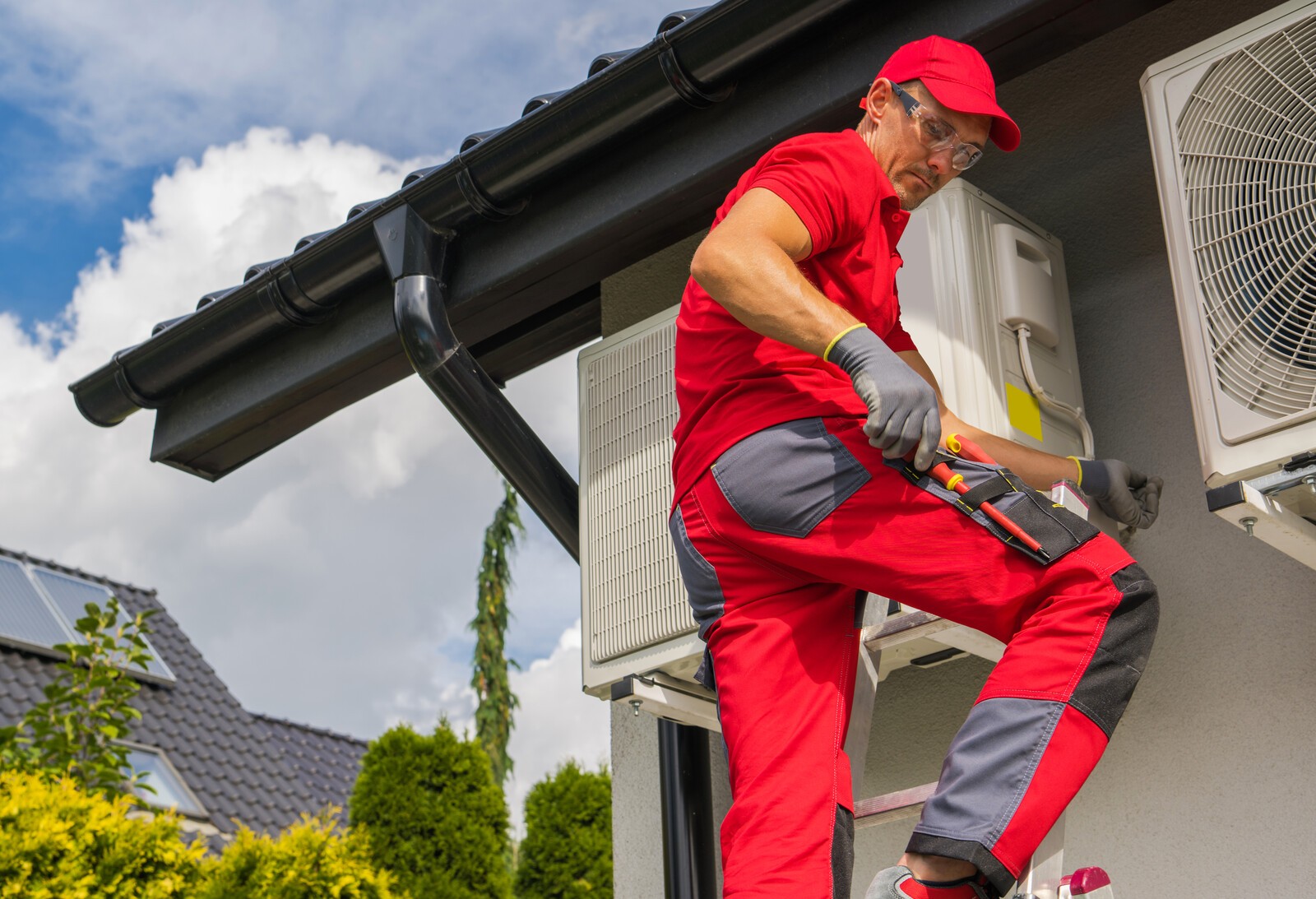
During the past 20 years, multiple companies have created heat pumps that can effectively heat large houses. Once you evaluate several heat pumps, you may select a product that features durable coils, efficient valves, a substantial amount of refrigerant and a sizable compressor. You could also purchase a geothermal heat pump, and a heat pump can considerably reduce energy costs, improve comfort and decrease carbon emissions.
Evaluating the Coils and the Compressor
The heat pump may feature a durable compressor that will modulate the flow of refrigerant, and the component can also compress the liquid in the coils. The system features coils that contain refrigerant, and usually, a heat pump will have outdoor coils and indoor coils.
Selecting a Heat Pump That Features a Control Board
The control board will regulate the operations of the heat pump. Once a customer accesses a control board, the user can select the appropriate mode, and the heat pump could quickly defrost the system, heat multiple rooms or utilize other modes. The control board may also feature a thermostat, and the control board could automatically examine the indoor temperature, modify multiple types of settings and decrease the costs of utilities.
Evaluating the Features of a Geothermal Heat Pump
Geothermal pumps are substantially more efficient than traditional systems, and geothermal pumps do not require fuel. Once you install an efficient pump, the system will consistently transfer heat from the ground. The system features sizable coils that will transport the refrigerant, and a geothermal pump may also contain a heat exchanger that removes the heat from the fluid. Subsequently, the system will deliver warm air to multiple rooms. Fortunately, a geothermal system can effectively heat a large house, and the cutting-edge system could also minimize greenhouse gases, carbon emissions and volatile organic compounds.
Purchasing a Product That Can Heat Many Rooms
You may select a heat pump that contains a durable fan, and the control board can modulate the rotational speed of the fan. The lightweight fan will allow warm air to reach many rooms. Therefore, the efficient fan can help the system to heat an entire house.
Improving the Designs of Heat Pumps
Throughout the 1950s, several businesses designed heat pumps that could heat sizable rooms, yet usually, these products were not able to heat large buildings. The heat pumps utilized electricity, refrigerant and outdoor air; however, the manufacturers created heat pumps that did not feature large coils. In the 1960s, many businesses modified the old systems, tested cutting-edge designs and examined the opinions of customers. The businesses also added larger coils that reduced the consumption of energy, improved the flow of refrigerant and increased the availability of warm air.
During the 1990s, several businesses designed efficient compressors, and some companies frequently sold heat pumps that utilized hot water. The companies also managed marketing campaigns that encouraged customers to try heat pumps. Moreover, the corporations offered excellent warranties that protected the coils, the compressors and the main valves.
Testing a Heat Pump
When a technician evaluates a heat pump, the expert can examine the valves, the compressor and the coils. The technician may also test the fan, and the expert could evaluate the rotational speed of the fan. Usually, an employee will also inspect the filter, and if a filter is dirty, the technician can replace the filter. The technician may recommend a durable filter that will remove environmental toxins, minimize dust and improve the indoor air.
The technician will thoroughly inspect the coils that can transport refrigerant within the system. If a coil is damaged, the coil could cause substantial leaks, and the technician can quickly replace the evaporator coil. Alternatively, an expert may add durable sealants that will eliminate the leak.
The expert can examine the thermostat that will control the temperature of the indoor air. Sometimes, a company may recommend a smart thermostat that could automatically adjust the temperatures of the rooms, examine the consumption of electricity and reduce energy costs. Some thermostats are also compatible with smartphones, and once you access a mobile application, you may remotely access the control board, receive important updates and examine multiple reports.
Utilizing Strategies That Can Improve Energy Efficiency
Many homeowners have evaluated multiple techniques that could minimize energy costs, improve comfort and decrease carbon emissions. Before the wintertime, you may install windows that feature double panes, and these windows can effectively improve the temperature within the building. Some residents may also seal the windows, and the sealant can prevent cold air from entering the house.
You may also purchase a programmable thermostat that will help you to control the heat pump. The efficient thermostat can automatically adjust the temperature of the heat pump, increase comfort and reduce the consumption of electricity. According to multiple reports, a programmable thermostat could decrease the costs of utilities, monitor the heat pump and offer informative reports.
Reducing Carbon Emissions
Fortunately, heat pumps may considerably reduce carbon emissions, and according to several reports, the heat pumps could benefit local environments, mitigate the effects of greenhouse gases and reduce levels of volatile organic compounds. Many experts have suggested that more than 90 percent of customers may purchase heat pumps during the next 30 years. The heat pumps could considerably reduce the levels of carbon dioxide in the atmosphere, and the products may utilize less electricity than traditional systems.
Examining Multiple Systems
During the summer months, the heat pump can effectively cool the interior of a house. Some products feature reversible valves, and once you modify certain settings, the product may deliver cool air, increase the rotational speed of the fan and modulate the flow of refrigerant. After you install a reversible heat pump, you might not require an air conditioner, and you could select a system that will reduce the costs of maintenance, increase the efficiency of the compressor and improve the indoor air.
The heat pumps feature fans that will help air to flow within the building. Consequently, the system may considerably decrease the levels of airborne dust in the building, and the efficient fans can also reduce environmental toxins that could affect the inhabitants. Moreover, the heat pump features a filter that will remove airborne pollutants from the air.
Performing Routine Maintenance and Examining a Heat Pump
When a customer evaluates a heat pump, the customer could install a new filter, clean the coils and remove dust. The customer can also evaluate the alignment of the fan, the fan's motor and the main vents. If a fan is damaged, an experienced technician could replace the fan, align the fan and add a durable filter.
Buying a Heat Pump
Before you purchase a heat pump, you can examine the reputation of the manufacturer, multiple components, excellent testimonials and the manufacturer's warranty. You may also contact a company to install heat pumps, and an experienced representative can recommend a heat pump that will reduce routine maintenance, decrease operational costs and heat an entire house
